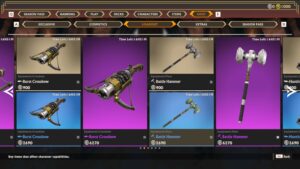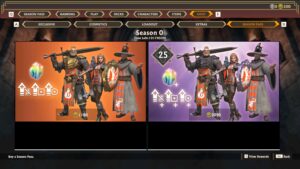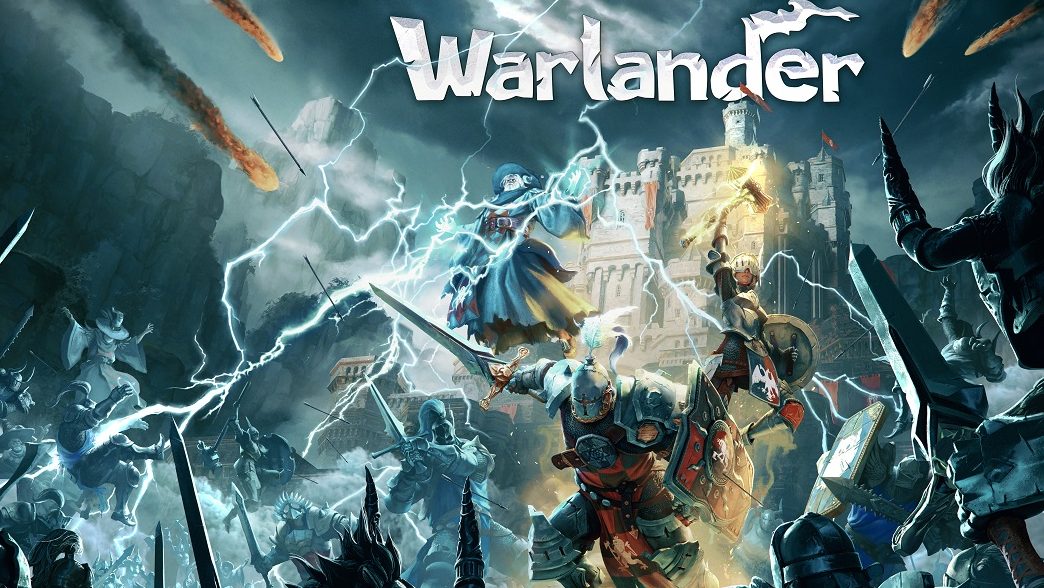
On paper, Warlander is an ambitious game. On the Steam page it describes itself as having qualities of MOBAs, battle royales, and 3rd person action games like Diablo.
At a glance, the game certainly seems to deliver. The store page is decorated with sprawling third person battles with soldiers, wizards, and clerics, but what’s the truth of the matter?
Is Warlander another game crushed under the weight of its ambition, or does it actually succeed despite trying to be so many things at once?
Warlander
Developer: ToyLogic Inc.
Publisher: Plaion
Platforms: Windows PC (Reviewed), PlayStation 4, PlayStation 5, Xbox One, Xbox Series X/S
Release Date: January 24, 2023 (PC), Gen 9 consoles at a later date
Players: 1-4
Price: Free to Play

Although not directly related to the game, I want to take a brief moment to praise the Discord server for the Warlander beta. I was surprised to see candid threads about monetization and features. Clearly, the developers value player feedback and candor.
Developer Toylogic is no stranger to action games either, they might sound familiar from their work on NieR Replicant ver.1.22474487139 where they’ve shown they can handle hack-and-slash gameplay.
However, Warlander is where the developer has gotten to prove they know what they’re doing. While NieR Replicant was light on the combat, their newest game is all combat.
Gameplay in Warlander in its current state includes two army battles and five army free-for-alls. Players are sorted out into squads with different roles, these aren’t fast and loose but they’re a good way to keep everyone organized similar to lanes in a conventional MOBA.

Players will have squad objectives that award them personal points that reflect their contribution, but the real name of the game comes down to one thing: destroy your enemy’s core.
This can be done a lot of ways, players can slip through flank points while their allies form a solid front, or you can overwhelm your enemy head on and siege their castle. It’s a team game but players are given a lot of leeway to play around.
There’s even siege weapons and tools that can be built with a fun little mini-game where you keep your cursor in the center while hammering away. It takes some of the monotony out of it.
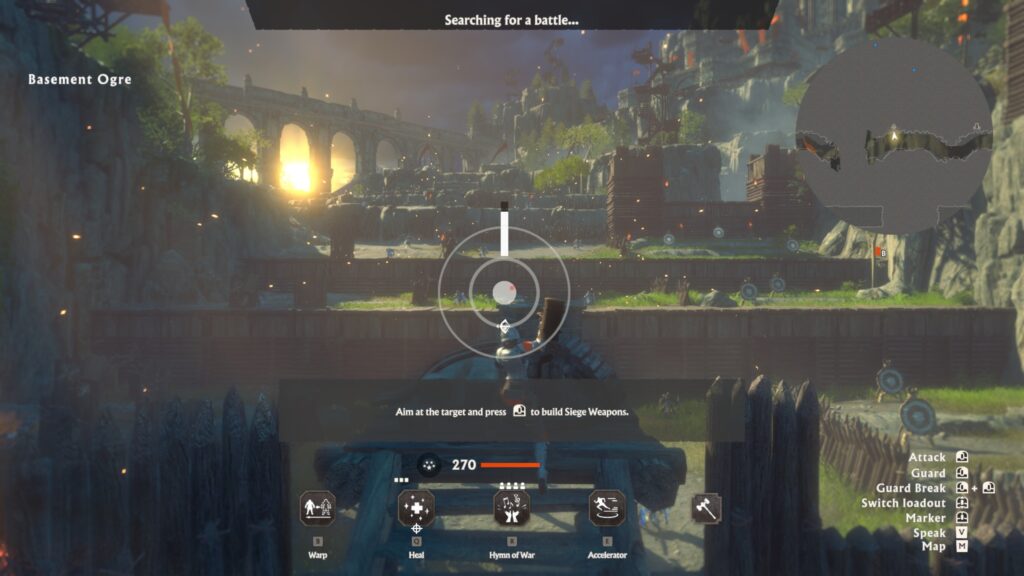
Currently there are only three main classes: Warrior, Cleric, and Mage. Each has a different set of abilities. Warrior is a damage dealer with a strong shield and crowd control abilities, Cleric can heal and offer some small buffs, and lastly the Mage can do long-range damage reliably and cause some AoE havoc.
Two army battles are the conventional game mode and there’s already a handful of maps available for it. It can be tough to navigate the choke points but ToyLogic has done a good job of making ways for allies to get out of their base without opening the gates.
The minimap in Warlander is a surprisingly smart move. Players are visible to each other basically all the time. Smart players can always go where they’re needed in a constant back and forth. It makes for more balanced gameplay and ensures players can always go to where the action is. Conversely, it makes stealth plays difficult unless the enemy team collectively ignores you.
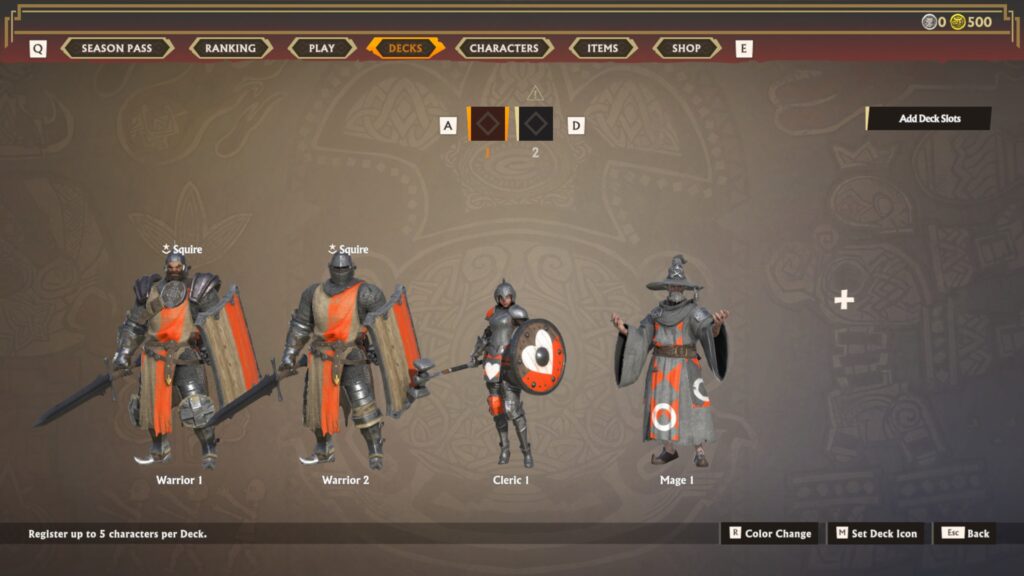
Strategy plays out on a macro scale and one person is not likely to make a huge difference unless they’re piloting a siege engine, sneaking directly to the enemy core, or just being a wrecking ball in a big battle. Fights are messy and basically a matter of who gets hit-stunned first as there’s not much opportunity to recover.
There’s also a weird balance to the game right now where Warriors make up the bulk of a force and do good melee damage, Clerics are passable melee damage with some nice healing utility, and Mages do good damage and AoE.
The Mage has an unfortunate tradeoff where he can’t block and his basic spells are easily blocked in turn. This is probably meant to provide some balance to the Mage’s range, but it’s frustrating to encounter an enemy 1v1 and just have them walk at you with their shield up.
Speaking of the classes, all of them are easy to identify due to their overall silhouettes. Warriors are bulky dudes, Mages are beanpoles with hats, and Clerics are women. It’s probably intended for players to easily identify their opponents quickly, but it’d be nice to have other gender options for the classes. Just from a customization standpoint.
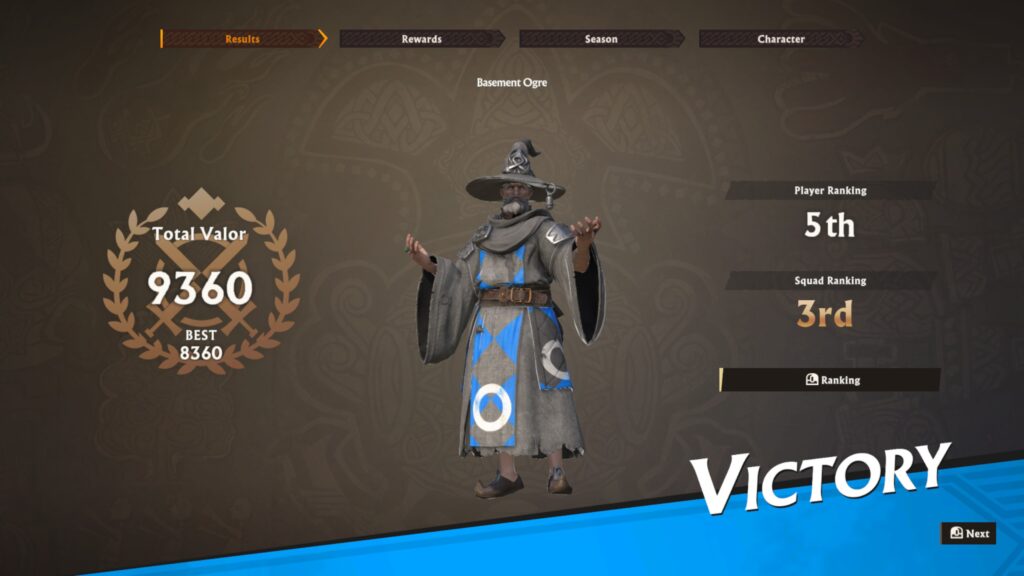
Progression is done through random drops and “Title” unlocks in-game. When a character unlocks a title, you can upgrade them which raises their available points for equipment. The drawback is that powerful characters have star rankings and that star ranking needs to be acquired mid-match before you can spawn that character. Titled characters also have their own separate cooldown between spawns.
While in the main menu you make a “deck” of units to bring into a battle. For instance if I’m good at Mage I might bring a Titleless Mage and have one of each class with a high title for when I need to bring power to the field. Or I might keep a Titleless of each class for being versatile early game but with less powerful options later.
Warlander does have a cash shop but ToyLogic has made a point to not make the game “Pay to Win”. Premium currency is mostly spent on cosmetics and normal currency earned in-game can be used to buy gear with random attributes.
There is a bit of a grey area that concerns me though, premium currency can be spent on boosts that can increase the rarity of drops or increase the amount of gear dropped after a match. This doesn’t allow you to buy more powerful items than anyone else, but it’s very close to giving players a tangible edge for spending money.
Ultimately, there’s nothing quite like Warlander. You might be quick to compare it to games like Mordhau due to its equipment point method of balancing gear but with fast respawns and fantastical abilities the combat is more fast-paced (if a bit less skillful).
Players will have an easy time picking up Warlander and while there are some tips and tricks to performing well, the game’s chaotic combat helps even the odds since the most powerful foe can be overwhelmed with numbers or strategy.
At the end of the day, you’ll probably have fun with Warlander if you’re a fan of Team Death Match style games. Whether that means Mordhau or a first-person shooter like Team Fortress 2, the action is chaotic and the deaths aren’t punishing so you can always just sign in and get to fighting, and you should.
Warlander was reviewed on a Windows PC using a beta key provided by Plaion. You can find additional information about Niche Gamer’s review/ethics policy here. Warlander arrives on PC (via Steam) on January 24 and is coming to current gen consoles at a later date.
